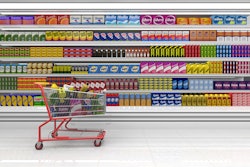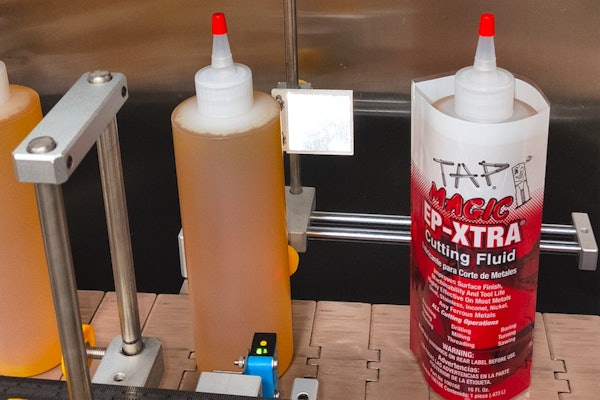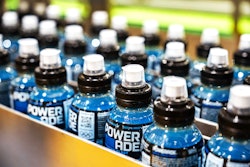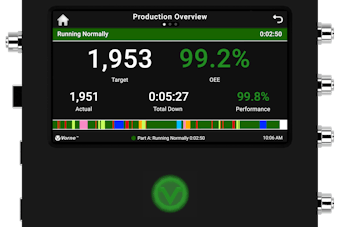An unprecedented blend of economic and health disruptions, it has affected us all, and though it’s impossible to pin an end-date on it, there is no question that we will succeed to the extent we can all work together to battle the pandemic, on both the health and economic fronts. I am sending you all my best wishes for your health and safety and comfort as we all cope with it, simultaneously apart and together.
The packaging industry has had to adjust to the pandemic’s new demands, of course. For packaging makers and users, who have to contend with the challenges of continuing in operation as best they can during the era of stay-at-home orders, sometimes continuing on because they are considered “essential,” an additional challenge has arisen because consumers want to know whether the virus can be transmitted on packaging itself.
Government agencies are communicating the facts with a series of written statements. Included among them is this from an FDA Q&A document:
Q: Can I get the coronavirus from food, food packaging, or food containers and preparation area?
A: Currently there is no evidence of food, food containers, or food packaging being associated with transmission of COVID-19. Like other viruses, it is possible that the virus that causes COVID-19 can survive on surfaces or objects. For that reason, it is critical to follow the 4 key steps of food safety—clean, separate, cook, and chill.
If you are concerned about contamination of food or food packaging, wash your hands after handling food packaging, after removing food from the packaging, before you prepare food for eating and before you eat. Consumers can follow CDC guidelines on frequent hand washing with soap and water for at least 20 seconds; and frequent cleaning and disinfecting of surfaces.
Packaging itself, as always, can be a key aid during the pandemic to efficient and safe distribution of many foods and other important goods to consumers. The good news for packagers is that the common expert advice appears to be that consumers need not have special concern about the safety of packaging brought into their home, though all should still take the recommended precautions such as wiping down packages and surfaces or waiting a few hours to handle packages from outside the home. An opinion column in the March 26 Washington Post, by Joseph G. Allen of Harvard, did an especially good job of detailing the reasons the risks are low from a package from Amazon or a local food delivery.
Overall, the best general advice appears to be to pay attention to the safety officials’ recommendations, but to pay attention, too, because the advice could evolve over time.
Industry groups have taken important steps to communicate safety advice to consumers. For example, the Food Safety Alliance for Packaging (FSAP), a committee of the Institute of Packaging Professionals, describes itself as “a group of individuals from food companies and the food packaging supply chain dedicated to raising food quality and safety awareness for the food packaging industry.” (I’m a member.)
In late March, FSAP issued a “COVID-19 Statement” on its website explaining that the group “supports and is fully aligned with the positions published by the US-FDA and EFSA [European Food Safety Authority] concerning coronavirus transmission on surfaces such as food packaging,” and referred readers to those governments’ advice, along with links to other sources of information such as health organizations and other regulatory agencies.
Stephen Klump, who has served for many years as global head of packaging quality and safety for Nestlé, and who has been one of the key leaders of FSAP, says, “The food packaging suppliers were getting questions about COVID 19 on surfaces, so we thought it was appropriate for a packaging food safety group like FSAP to point people in the right direction.”
The recent events have brought to mind the value and importance of having a competent and fair government, particularly regulatory officials overseeing public health.
I am an industry advocate by trade, and of course bureaucrats and regulators overdo it now and then, as do the legislators who set them in motion, but this crisis is a good reminder that a great deal of scientific and technical knowledge and experience are necessary for effectively operating a government’s public health protection functions. Clearly, we need their expertise right now more than ever.
As for how it’s all going, as I write this, there are the beginnings of some good signs that the virus’ spread is responding to the various preventive practices. Time will tell, of course, but in the meantime, hang in there, stay safe, wash your hands, and, if you haven’t already done so, watch “Tiger King” on Netflix.
Eric Greenberg can be reached at [email protected]. Or visit his firm’s Web site at www.ericfgreenbergpc.com.
INFORMATIONAL ONLY, NOT LEGAL ADVICE.

























